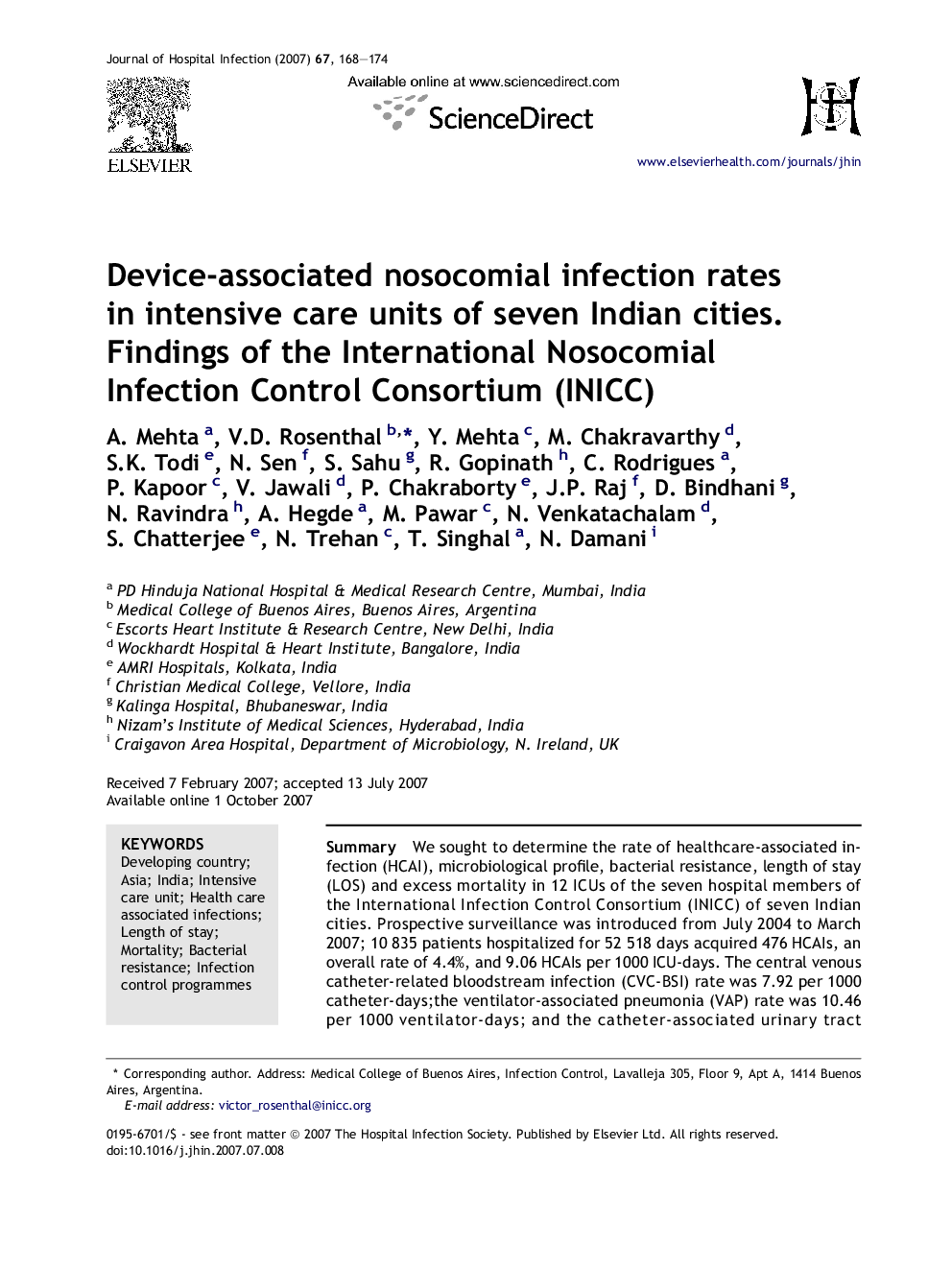| کد مقاله | کد نشریه | سال انتشار | مقاله انگلیسی | نسخه تمام متن |
|---|---|---|---|---|
| 3373660 | 1219304 | 2007 | 7 صفحه PDF | دانلود رایگان |

SummaryWe sought to determine the rate of healthcare-associated infection (HCAI), microbiological profile, bacterial resistance, length of stay (LOS) and excess mortality in 12 ICUs of the seven hospital members of the International Infection Control Consortium (INICC) of seven Indian cities. Prospective surveillance was introduced from July 2004 to March 2007; 10 835 patients hospitalized for 52 518 days acquired 476 HCAIs, an overall rate of 4.4%, and 9.06 HCAIs per 1000 ICU-days. The central venous catheter-related bloodstream infection (CVC-BSI) rate was 7.92 per 1000 catheter-days;the ventilator-associated pneumonia (VAP) rate was 10.46 per 1000 ventilator-days; and the catheter-associated urinary tract infection (CAUTI) rate was 1.41 per 1000 catheter-days. Overall 87.5% of all Staphylococcus aureus HCAIs were caused by meticillin-resistant strains, 71.4% of Enterobacteriaceae were resistant to ceftriaxone and 26.1% to piperacillin–tazobactam; 28.6% of the Pseudomonas aeruginosa strains were resistant to ciprofloxacin, 64.9% to ceftazidime and 42.0% to imipenem. LOS of patients was 4.4 days for those without HCAI, 9.4 days for those with CVC-BSI, 15.3 days for those with VAP and 12.4 days for those with CAUTI. Excess mortality was 19.0% [relative risk (RR) 3.87; P ≤ 0.001] for VAP, 4.0% (RR 1.60; P = 0.0174) for CVC-BSI, and 11.6% (RR 2.74; P = 0.0102) for CAUTI. Data may not accurately reflect the clinical setting of the country and variations regarding surveillance may have affected HCAI rates. HCAI rates, LOS, mortality and bacterial resistance were high. Infection control programmes including surveillance and antibiotic policies are a priority in India.
Journal: Journal of Hospital Infection - Volume 67, Issue 2, October 2007, Pages 168–174